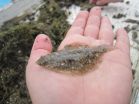In a report on the work published in the Aug. 27 issue of Cell, the Johns Hopkins-led research team says it has found a core group of genes related to both a viral defense warning system and susceptibility to a demethylating drug called 5-azacytidine that chemically alters their ability to operate through a process called demethylation.
A study with similar findings authored by Daniel De Carvalho, Ph.D., at the Ontario Cancer Institute/Princess Margaret Hospital, and Peter Jones, Ph.D., D.Sc., director of research at the Van Andel Institute, focused on the ability of DNA demethylating agents to target colorectal cancer stem cells, is published in the same journal issue.
Tumors are known to co-opt cellular gene-silencing systems that add tiny chemicals called methyl groups to areas of genes, thereby turning off the affected gene function. Such "epigenetic" control normally occurs in many genes, including ones that contain DNA leftover from previous exposures to viruses. When epigenetic control of these genes is removed, the virus-laden gene sequences are activated and trigger an alert to immune system cells that a virus has invaded.
"A main barrier to immune therapy success has been the tumor's ability to keep the immune system from functioning against the cancer," says study leader Stephen Baylin, M.D., the Virginia and Daniel K. Ludwig Professor of Cancer Research at the Kimmel Cancer Center. "The immune cells are there, but like an unarmed army, they hang around and do nothing. However, certain epigenetic processes that silence such viral defense genes can be reversed in tumor cells with a demethylating drug, making immunotherapies work more effectively to kill cancer cells."
For their new study, Baylin and his team worked with laboratory-grown cell lines from human ovarian, colon and skin cancer, and the team led by De Carvalho worked with colon cancer cells. In the cancer cell lines, both teams found that the viral defense pathway can be turned on when the cells were exposed to 5-azacytidine. Once the pathway is activated, Baylin adds, the tumor cells release signaling proteins called interferons that rouse other cancer-fighting cells in the immune system.
Then, the Johns Hopkins team created a gene signature of the viral defense pathway. In tumor samples available from the National Cancer Institute's Cancer Genome Atlas project, the scientists used the gene signature to distinguish between tumor samples with high expression of the pathway from those with low expression. Those with high expression may respond to certain immunotherapy drugs without the aid of 5-azacytidine, but those with low expression levels may need the epigenetic drug to boost response to immunotherapy, says Baylin.
Looking for the connection between the pathway's expression and immunotherapy drug response, the Johns Hopkins investigators and their colleagues focused on expression levels of the viral defense pathway in tumor cells from 21 patients with melanoma treated with the immune therapy drug ipilimumab at Memorial Sloan Kettering Cancer Center. They found high expression levels in the cells of seven of eight of those patients who had responded well to ipilimumab. Cells from all 12 patients with limited response to ipilimumab had low expression of the viral defense pathway.
In a melanoma mouse model in which ipilimumab alone was partially effective, adding 5-azacytidine to ipilimumab triggered a better tumor response.
"Our findings further decipher the mechanisms that lead to this tumor cell immune reaction and offer a way to potentially boost the success of immune therapies in patients with cancer," says Baylin, who first became interested in the immune system's connection to 5-azacytidine when laboratory research and clinical trials at Johns Hopkins hinted at the drug's ability to prevent cancer cells' proliferation when combined with immunotherapy.
Baylin and his colleagues say that, if their findings are confirmed and extended in clinical trials, the 5-azacytidine treatment could be followed by ipilimumab or other types of immunotherapy called checkpoint blockade, which lower cancer cells' defenses and allow immune system cells to see and destroy them.
"Treatment with 5-azacytidine activates interferon signaling in tumor cells and, when followed by checkpoint blockade immune therapy, the immune cells could go into increased action against the cancer," says Johns Hopkins research fellow and lead author Katherine Chiappinelli, Ph.D.
Baylin and Chiappinelli caution that clinical trials will take time to learn how effective the strategy of alerting the viral defense pathway might be. But the strategy holds promise, he says, for patients who have cancers with low expression of the pathway.
INFORMATION:
In addition to Baylin and Chiappinelli, other investigators included Pamela L. Strissel, Alexis Desrichard, Huili Li, Christine Henke, Benjamin Akman, Alexander Hein, Neal S. Rote, Leslie M. Cope, Alexandra Snyder, Vladimir Makarov, Sadna Buhu, Dennis Slamon, Jedd D. Wolchok, Drew M. Pardoll, Matthias W. Beckmann, Cynthia A. Zahnow, Taha Mergoub, Timothy A. Chan and Reiner Strick. In addition to the Johns Hopkins Kimmel Cancer Center, participating institutions included the University-Clinic Erlangen in Germany, Memorial Sloan Kettering Cancer Center, Case Western Reserve University and Jonsson Comprehensive Cancer Center at UCLA.
Baylin is a consultant for MDxHealth, which makes an assay procedure that is licensed to MDxHealth by The Johns Hopkins University. Baylin and the university are entitled to royalty shares from sales of the assay. Pardoll is a consultant for Pfizer and Amplimmune.
The research was funded by the National Institutes of Health's National Cancer Institute (CA058184, F32CA183214), the Stand Up To Cancer Epigenetic Dream Team, the Hodson Trust, the Samuel Waxman Cancer Research Foundation, the Dr. Miriam and Sheldon G. Adelson Medical Research Foundation, a Department of Defense Teal Award (BC031272-SBB), the Pershing Square Sohn Cancer Research Alliance, the STARR Cancer Consortium, the Ludwig Foundation and German Cancer Aid.
Johns Hopkins Medicine
Media Relations and Public Affairs
Media contacts:
Patrick Smith, 410-955-8242, pjsmith@jhu.edu
Jania Matthews, 410-955-5384, jmatth27@jhmi.edu

